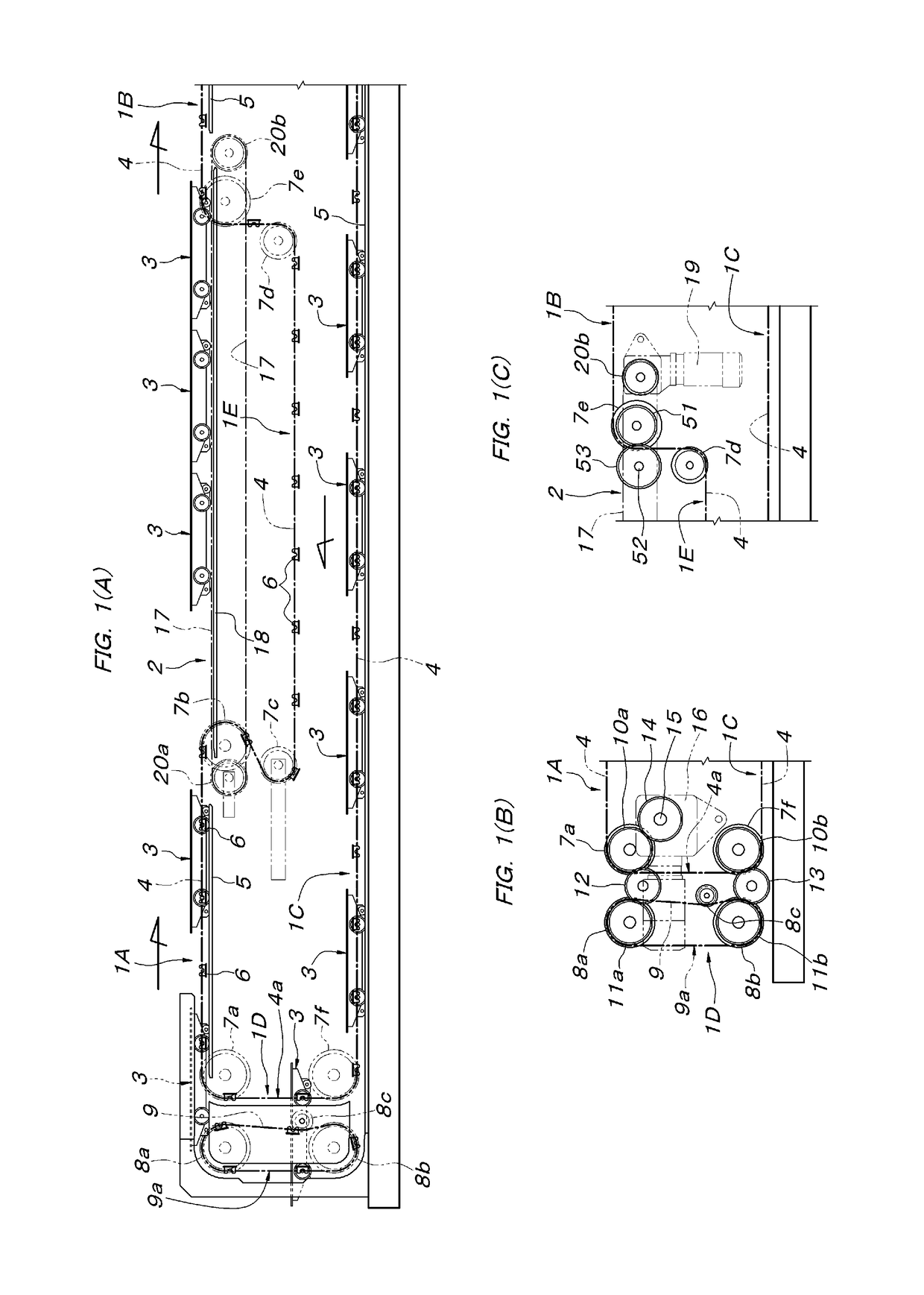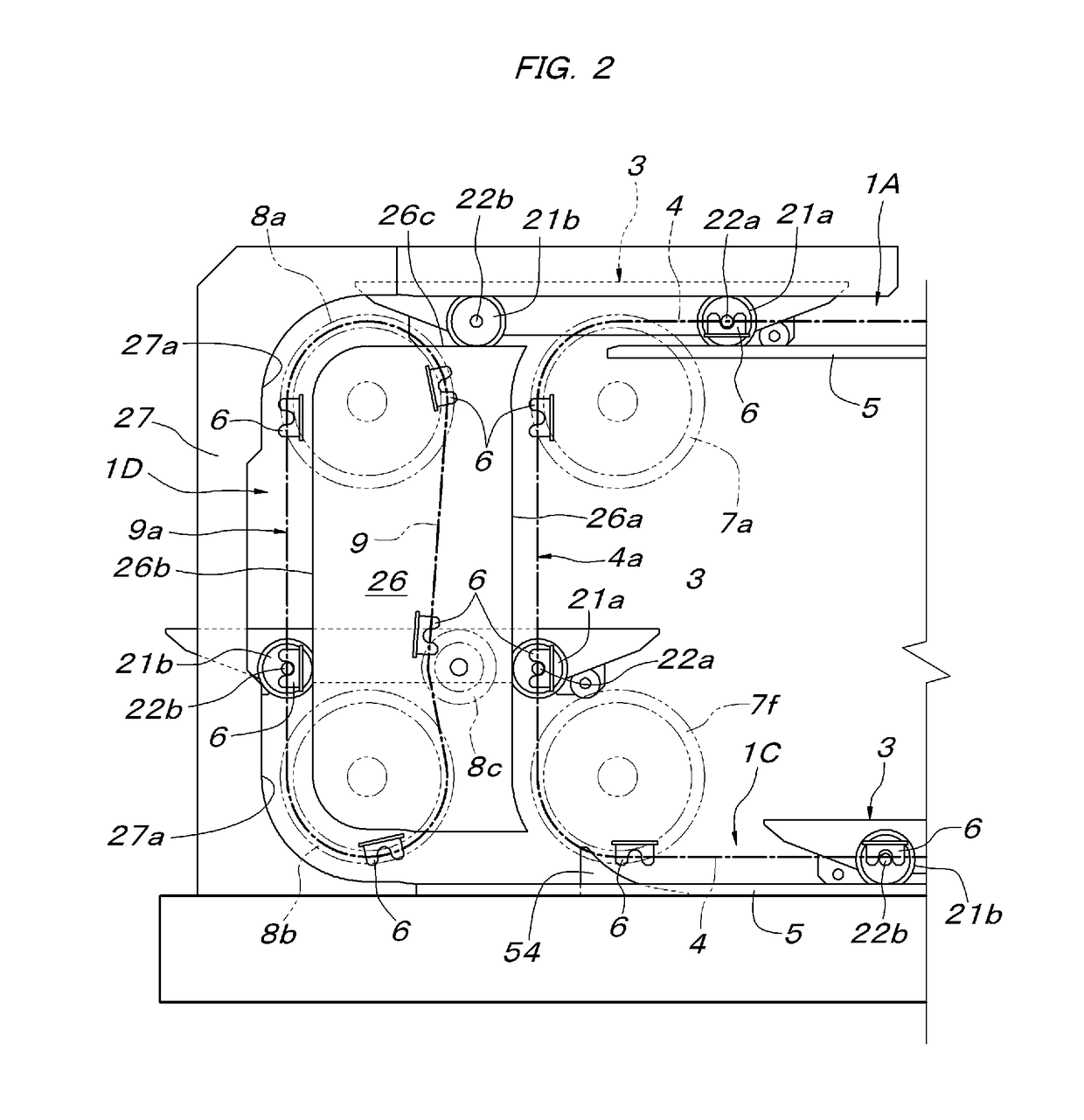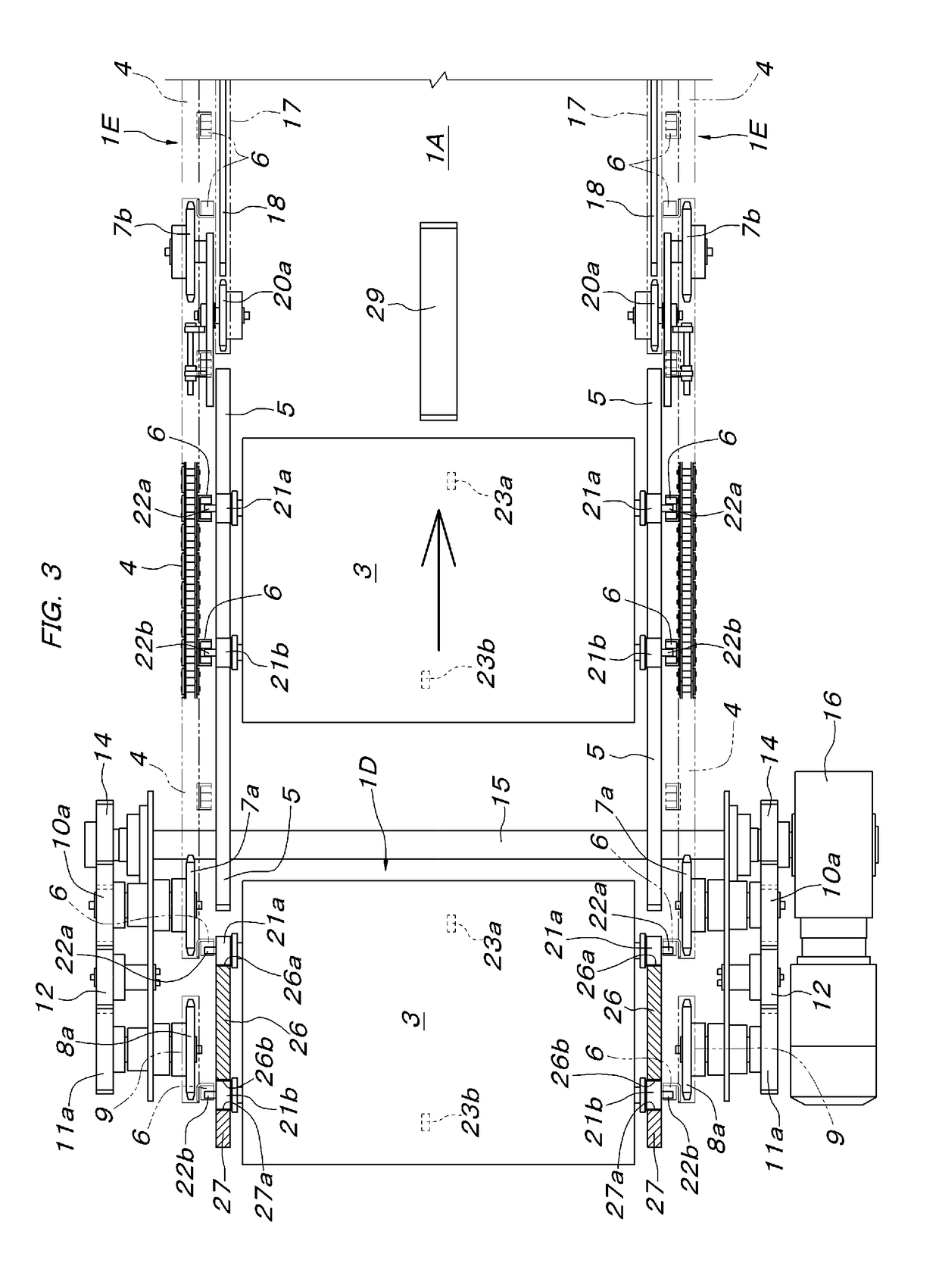Conveyance Device Using Carriage
a technology of conveying device and carriage, which is applied in the direction of mechanical conveyors, rope railways, vehicles, etc., can solve the problems of difficult to reliably fit the driven pin of the conveying carriage, varied time delay, and time delay, and achieves the effect of convenient and reliable fitting, simple structure and inexpensive implementation
- Summary
- Abstract
- Description
- Claims
- Application Information
AI Technical Summary
Benefits of technology
Problems solved by technology
Method used
Image
Examples
Embodiment Construction
[0022]An embodiment of the present invention will be described below with reference to accompanying drawings. In FIGS. 1 to 4, reference sign 1A denotes an upstream side drive route part, reference sign 1B denotes a downstream side drive route part, and reference sign 2 denotes a storage route part arranged horizontally between the upstream side drive route part 1A and the downstream side drive route part 1B, and a horizontal conveyance route of a conveyance carriage 3 is formed with the upstream side drive route part 1A, the storage route part 2, and the downstream side drive route part 1B that are horizontally continuous. Reference sign 10 denotes a return drive route part, communicates with the downstream side of the downstream side drive route part 1B and is arranged horizontally directly below the upstream side drive route part 1A and the storage route part 2. The return drive route part 10 is connected via a rising route part 1D to the beginning end portion of the upstream sid...
PUM
 Login to View More
Login to View More Abstract
Description
Claims
Application Information
 Login to View More
Login to View More - R&D
- Intellectual Property
- Life Sciences
- Materials
- Tech Scout
- Unparalleled Data Quality
- Higher Quality Content
- 60% Fewer Hallucinations
Browse by: Latest US Patents, China's latest patents, Technical Efficacy Thesaurus, Application Domain, Technology Topic, Popular Technical Reports.
© 2025 PatSnap. All rights reserved.Legal|Privacy policy|Modern Slavery Act Transparency Statement|Sitemap|About US| Contact US: help@patsnap.com



